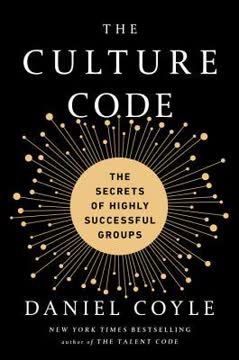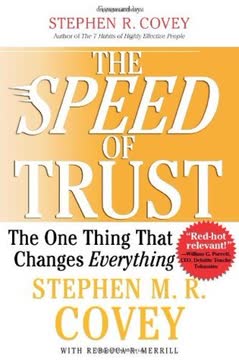Key Takeaways
1. Leadership Begins with Leading Yourself
Self-leadership comes first. It makes every other kind of leadership possible.
Foundation of leadership. Before you can effectively lead others, you must first master leading yourself. This involves establishing personal credibility and ensuring your internal state is strong. Many leadership challenges stem from a failure in self-leadership, often due to blind spots.
Identify blind spots. Everyone has areas they fail to see realistically, but these are particularly damaging for leaders as they multiply their impact. Common blind spots include a singular perspective, insecurity, an out-of-control ego, and weak character. Recognizing and addressing these is crucial.
- Singular Perspective: Always right, repeating the same advice.
- Insecurity: Seeking credit, threatened by others' growth.
- Out-of-Control Ego: Believing you know it all, blaming others.
- Weak Character: Missing deadlines, breaking promises, shading truth.
Overcome blind spots. Assume you have them, ask trusted people for honest feedback, accept you need help, discuss them openly with your inner circle, and build a team that complements your weaknesses. Aligning your values, thoughts, feelings, and actions strengthens your character and self-leadership.
2. Leadership is Influence, Not Position
Leadership is influence, and it can be learned.
Influence is the core. Your ability to influence others is the single greatest factor in your success as a leader. You don't need a title, position, or formal education to start leading; you just need the desire and willingness to learn how to influence positively.
Influence is a choice. Every day, you choose whether to be indifferent or to care about people, be inclusive, maintain a positive attitude, cooperate, and try to influence others positively. Your influence can be positive or negative, and you decide which it will be.
Influence is developed. Leadership is not discovered; it's a process of development. This involves being in a positive leadership environment (where leadership is caught more than taught), seeking exposure to great leaders (for inspiration), and being intentional about equipping yourself daily (learning skills).
3. Earn Trust Through Character and Competence
You need to earn trust before people will buy in, and you must earn it through character and competence.
Credibility is key. When starting in a new leadership role, people initially grant you temporary trust based on your position. However, lasting buy-in and influence are earned over time by consistently demonstrating strong character and competence. People watch to see if your words and actions align.
Demonstrate competence. Build credibility by focusing on the basics:
- Work hard: People respect effort.
- Think ahead: Plan and prioritize for the team.
- Demonstrate excellence: Be good at your job.
- Follow through: Bring tasks to completion.
Communicate character. Show your character quickly by:
- Caring about people: Show genuine concern.
- Making things right: Own mistakes and apologize.
- Telling the truth: Be consistent and honest, even with hard truths.
If you consistently demonstrate character and competence, you will earn trust, increase your influence, and gain buy-in from your team.
4. The Purpose of Leadership is Adding Value to People
First and foremost, leadership is about adding value to people.
Make others better. The ultimate goal of leadership is to help people remove self-imposed limitations and reach their potential. This benefits individuals, the team, the organization, and ultimately, the world.
How to add value:
- Listen to their story: Understand their history, hurts, and hopes.
- Make their agendas your priority: Focus on their needs and dreams where possible.
- Believe in them: Express your confidence; people rise to expectations.
- Discuss and plan: Help them align their vision with their work.
- Help them until accomplished: Follow through on your commitment to assist.
No downside to adding value. While it requires time and effort, investing in people makes them more valuable, improves team effectiveness, strengthens the organization, and brings deep personal satisfaction.
5. Navigate Conflict and Difficult People Decisively
You cross into bad leadership only if you make the choice to keep someone on the team when you shouldn’t.
Address issues promptly. Dealing with conflict and challenging people is difficult, but necessary. Waiting too long is a mistake. You owe everyone your best effort to help them succeed, but not repeated chances at the expense of the team.
Follow a process:
- Meet privately ASAP: Discuss specific behavior calmly, assuming good motives.
- Ask for their side: Understand their perspective or circumstances.
- Seek agreement: See if they acknowledge the problem. If not, state your position and set expectations.
- Set action plan & deadline: Clearly define required changes and timelines.
- Validate & commit: Express care and offer help.
Make tough decisions. If, after giving your best effort, someone is unwilling or unable to change, you must decide if keeping them is best for the team. Ask yourself: "Knowing what I know now, would I hire this person?" If the answer is no, it's time to let them go.
6. Succeed Even Under Poor Leadership
Never complain about what you allow.
Control your response. Working for a bad or difficult leader is frustrating, but you can only control your own actions and responses. Complaining about a situation you allow to continue puts you in the wrong.
Strategic interaction: If you choose to stay, try to improve the situation through a deliberate process:
- Self-reflect: Are you part of the problem?
- Gather evidence: Base concerns on specific actions, not feelings or hearsay.
- Assess influence: Understand your credibility with your leader.
- Plan outcomes: Think through possible reactions and your responses.
- Decide to act: Commit to addressing the issue or accepting the situation.
- Meet privately: Present concerns respectfully, seeking collaboration.
Know when to leave. If the situation doesn't improve, violates your values, erodes confidence, or hinders your ability to add value and stay true to yourself, it may be time to move on. Ask: "If I weren't already here, would I join this organization?"
7. Lead Yourself and Others Through Change and Transition
All change does not represent progress, but without change there can be no progress.
Transition is constant. Life and organizations are always in transition. Leaders must navigate these changes effectively, both personally and for their teams. Good transitions require intentionality and planning.
Leading organizational change:
- Change what's needed: Focus on difficult, impactful changes (culture, values), not just cosmetic ones.
- Let go of yesterday: Honor the past but show why moving forward is necessary and better.
- Communicate simply: Explain the vision for change with clarity and power, giving multiple reasons (including "What's in it for me?").
- Activate belief: Believe in the change and, crucially, believe in the people who must implement it.
- Remove barriers: Identify and eliminate outdated systems, procedures, difficult people, or resource issues.
- Lead with speed: Create short-term wins to build momentum, nourish faith, and silence critics.
Personal transition. When considering a move, assess if your restlessness is good (pulling you forward) or bad (escaping). Give your best where you are before leaving. Consider possibilities, weigh risks/rewards, seek affirmation from your inner circle, and then take action.
8. Developing Other Leaders is Your Greatest Legacy
A legacy is created only when leaders put their people into a position to do great things without them.
The highest calling. Developing leaders is perhaps the most rewarding activity for a leader. Your lasting value is measured by succession – the impact you have on people who continue to do great things after you're gone.
Identify potential. Look for key characteristics in potential leaders:
- Catalysts: Make things happen.
- Influencers: Can persuade others.
- Relationship Builders: Connect well with people.
- Gatherers: People are attracted to them.
- Value Adders: Seek to help others.
- Opportunists: See and seize opportunities.
- Finishers: Follow through on commitments.
Nurture talent. Leadership development is both art (intuition, relationships, inspiration) and science (facts, practice, evaluation, training). Help people realize their talent by finding evidence they want to grow, identifying their strengths (don't major in weaknesses), increasing their confidence, giving them a place to practice, coaching them, and continually increasing their responsibilities. Focus your development efforts on the top 20% with passion, teachability, and capacity.
9. Continuous Growth is Essential for Every Leader
What got you to where you are today will not get you to where you want to go tomorrow.
Grow into your future. To remain an effective leader and be ready for future opportunities and challenges, you must commit to continuous personal growth. If you stop growing, you start declining.
Intentional growth plan: Growth doesn't happen accidentally. You need a plan:
- Set aside time: Dedicate regular time for development.
- Determine areas: Identify where you need to grow.
- Find resources: Seek out books, mentors, conferences, etc.
- Apply daily: Put what you learn into practice consistently.
Seasons of life. Understand that life has different seasons (planning, planting, perspiration, produce). You may be in different seasons in different areas (family, spiritual, leadership). Be present and do what's right for the current season in each area. Don't wait to give your best.
10. Discover and Leverage Your Unique Strengths and Purpose
Discover your strengths and you have the opportunity to discover your purpose.
Know yourself. Finding your unique purpose as a leader requires knowing yourself deeply. Your purpose should be built on your strengths. Use self-evaluation tools and learn from both successes and failures to understand what you're good at.
Find your purpose clues: Ask yourself:
- What makes me sing? (Joy)
- What makes me cry? (Heart)
- What makes me dream? (Imagination)
- What makes me excel? (Strengths)
- What makes me different? (Uniqueness)
Leverage strengths. Once you know your strengths, intentionally spend more time using them. Sharpen these skills and target your work towards them until you find the thing you were born to do. This is where you add the most value.
11. Embrace Servanthood and Relationships
Leadership impact is drawn not from position or title but from authentic relationships.
Serve first. True leadership is rooted in servanthood. If you are unwilling to serve others, check your motives. Serving is an attitude, a motive (wanting to serve first), and a value (valuing people). It's not beneath you; it's the foundation of effective leadership.
Relationships matter. You cannot lead effectively by keeping people at arm's length. Authentic relationships build trust and connection. Treat people with kindness and respect, initiate contact, ask questions, learn about them, offer assistance, and help them succeed.
Walk slowly through the crowd. Effective leaders don't expect people to come to them; they go to where people are. Being highly relational increases your influence and makes people willing to follow you and go the extra mile.
Last updated:
Review Summary
What Successful People Know About Leadership receives mostly positive reviews, with an average rating of 3.97 out of 5. Readers appreciate its concise format, practical advice, and clear writing style. Many find it a valuable resource for leadership development, particularly for those new to the subject. Some praise its actionable insights and convenient layout. However, a few reviewers note that experienced leaders may not find much new information. The audio version receives mixed feedback, with some criticizing the narration.
Similar Books










Download PDF
Download EPUB
.epub digital book format is ideal for reading ebooks on phones, tablets, and e-readers.














